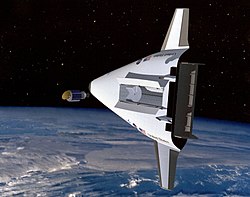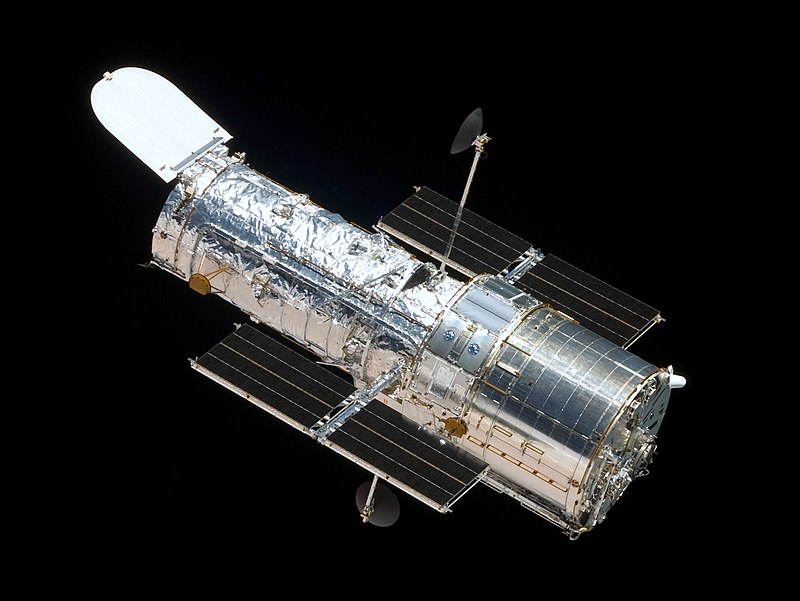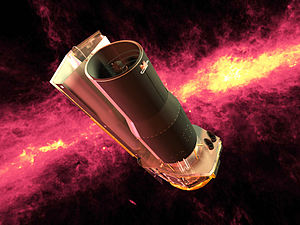Space Technologies
Space technology is technology developed by space science or the aerospace industry for use in spaceflight, satellites, or space exploration. Space technology includes spacecraft, satellites, space stations, and support infrastructure, equipment, and procedures.Space is such a novel environment that attempting to work in it requires new tools and techniques. Many common everyday services such as weather forecasting, remote sensing, GPS systems, satellite television, and some long-distance communications systems critically rely on space infrastructure. Of the sciences, astronomy and Earth science (via remote sensing) benefit from space technology. New technologies originating with or accelerated by space-related endeavors are often subsequently exploited in other economic activities.
- Hubble Space Telescope
The Hubble Space Telescope (often referred to as HST or Hubble) is a space telescope that was launched into low Earth orbitin 1990 and remains in operation. It was not the first space telescope, but it is one of the largest and most versatile and is well known as both a vital research tool and a public relations boon for astronomy. The Hubble telescope is named after astronomer Edwin Hubble and is one of NASA's Great Observatories, along with the Compton Gamma Ray Observatory, the Chandra X-ray Observatory, and the Spitzer Space Telescope.
Hubble features a 2.4-meter (7.9 ft) mirror, and its four main instruments observe in the ultraviolet, visible, and near infrared regions of the electromagnetic spectrum. Hubble's orbit outside the distortion of Earth's atmosphere allows it to take extremely high-resolution images with substantially lower background light than ground-based telescopes. It has recorded some of the most detailed visible light images, allowing a deep view into space. Many Hubble observations have led to breakthroughs in astrophysics, such as determining the rate of expansion of the universe.
The Hubble telescope was built by the United States space agency NASA with contributions from the European Space Agency.
- Spitzer Space Telescope (SST)
The Spitzer Space Telescope (SST), formerly the Space Infrared Telescope Facility (SIRTF), is an infrared space telescope launched in 2003 and is planned to be retired in January 2020.
The planned mission period was to be 2.5 years with a pre-launch expectation that the mission could extend to five or slightly more years until the onboard liquid helium supply was exhausted. This occurred on 15 May 2009.Without liquid helium to cool the telescope to the very low temperatures needed to operate, most of the instruments are no longer usable. However, the two shortest-wavelength modules of the IRAC camera are still operable with the same sensitivity as before the cryogen was exhausted, and have continued to be used to the present in the Spitzer Warm Mission.All Spitzer data, from both the primary and warm phases, are archived at the Infrared Science Archive (IRSA).
- Mars Rovers
A Mars rover is a motor vehicle that travels across the surface of the planet Mars upon arrival. Rovers have several advantages over stationary landers: they examine more territory, they can be directed to interesting features, they can place themselves in sunny positions to weather winter months, and they can advance the knowledge of how to perform very remote robotic vehicle control.
There have been four successful robotically operated Mars rovers, all managed by the Jet Propulsion Laboratory: Sojourner, Opportunity, Spirit and Curiosity. On January 24, 2016, NASA reported that current studies on Mars by Curiosity and Opportunity (the latter now defunct) would be searching for evidence of ancient life, including a biosphere based on autotrophic, chemotrophic or chemolithoautotrophic microorganisms, as well as ancient water, including fluvio-lacustrine environments(plains related to ancient rivers or lakes) that may have been habitable. The search for evidence of habitability, taphonomy (related to fossils), and organic carbon on Mars is now a primary NASA objective. In June 2018, Opportunity went out of contact after going into hibernation mode in a dust storm. NASA declared the end of the Opportunity mission on February 13, 2019, after numerous failures to wake up the rover.
- Communications Satellite
 A communications satellite is an artificial satellite that relays and amplifies radio telecommunications signals via a transponder; it creates a communication channel between a source transmitter and a receiver at different locations on Earth. Communications satellites are used for television, telephone, radio, internet, and military applications. There are 2,134 communications satellites in Earth's orbit, used by both private and government organizations. Many are in geostationary orbit 22,200 miles (35,700 km) above the equator, so that the satellite appears stationary at the same point in the sky, so the satellite dish antennas of ground stations can be aimed permanently at that spot and do not have to move to track it.
A communications satellite is an artificial satellite that relays and amplifies radio telecommunications signals via a transponder; it creates a communication channel between a source transmitter and a receiver at different locations on Earth. Communications satellites are used for television, telephone, radio, internet, and military applications. There are 2,134 communications satellites in Earth's orbit, used by both private and government organizations. Many are in geostationary orbit 22,200 miles (35,700 km) above the equator, so that the satellite appears stationary at the same point in the sky, so the satellite dish antennas of ground stations can be aimed permanently at that spot and do not have to move to track it.
- Non-rocket spacelaunch
Non-rocket spacelaunch refers to concepts for launch into space where some or all of the needed speed and altitude are provided by something other than rockets, or by other than expendable rockets. A number of alternatives to expendable rockets have been proposed. In some systems such as a combination launch system, skyhook, rocket sled launch, rockoon, or air launch, a rocket would be part, but only part of the system used to reach orbit.
Present-day launch costs are very high – $2,500 to $25,000 per kilogram from Earth to low Earth orbit (LEO). As a result, launch costs are a large percentage of the cost of all space endeavors. If launch can be made cheaper, the total cost of space missions will be reduced. Due to the exponential nature of the rocket equation, providing even a small amount of the velocity to LEO by other means has the potential of greatly reducing the cost of getting to orbit.
- Space manufacturing
Space manufacturing is the production of manufactured goods in an environment outside a planetary atmosphere. Typically this includes conditions of microgravity and hard vacuum. Manufacturing in space has several potential advantages over Earth-based industry.
- The unique environment can allow for industrial processes that cannot be readily reproduced on Earth.
- Raw materials could be lifted to orbit from other bodies within the solar system and processed at a low expense compared to the cost of lifting materials into orbit from Earth.
- Potentially hazardous processes can be performed in space with minimal risk to the environment of the Earth or other planets.
The space environment is expected to be beneficial for production of a variety of products. Once the heavy capitalization costs of assembling the mining and manufacturing facilities is paid, the production will need to be economically profitable in order to become self-sustaining and beneficial to society. The most significant cost is overcoming the energy hurdle for boosting materials into orbit. Once this barrier is significantly reduced in cost per kilogram, the entry price for space manufacturing can make it much more attractive to entrepreneurs.
- single-stage-to-orbit (or SSTO)
 A single-stage-to-orbit (or SSTO) vehicle reaches orbit from the surface of a body using only propellants and fluids and without expending tanks, engines, or other major hardware. The term usually, but not exclusively, refers to reusable vehicles.No Earth-launched SSTO launch vehicles have ever been constructed. To date, orbital launches have been performed by either fully or partially expendable multi-stage rockets.
A single-stage-to-orbit (or SSTO) vehicle reaches orbit from the surface of a body using only propellants and fluids and without expending tanks, engines, or other major hardware. The term usually, but not exclusively, refers to reusable vehicles.No Earth-launched SSTO launch vehicles have ever been constructed. To date, orbital launches have been performed by either fully or partially expendable multi-stage rockets.
The main projected advantage of the SSTO concept is elimination of the hardware replacement inherent in expendable launch systems. However, the nonrecurring costs associated with design, development, research and engineering (DDR&E) of reusable SSTO systems are much higher than expendable systems due to the substantial technical challenges of SSTO, assuming that those technical issues can in fact be solved.




Comments
Post a Comment